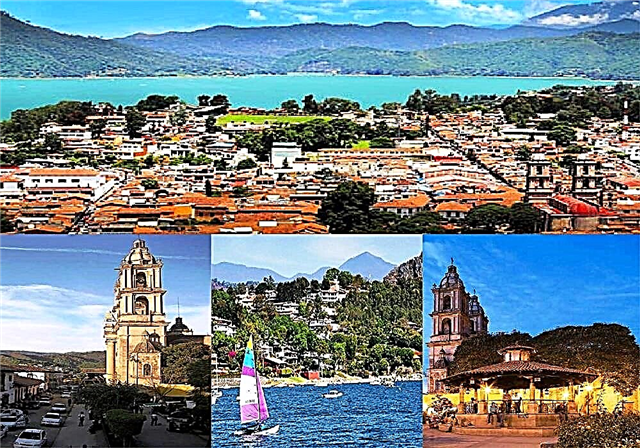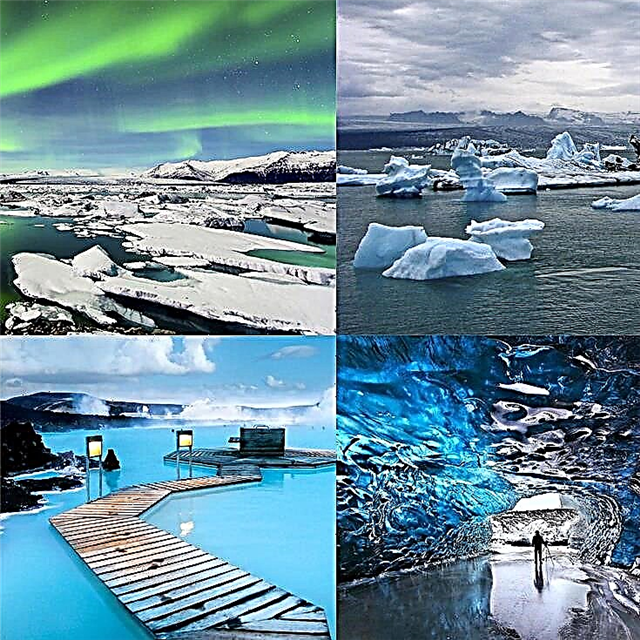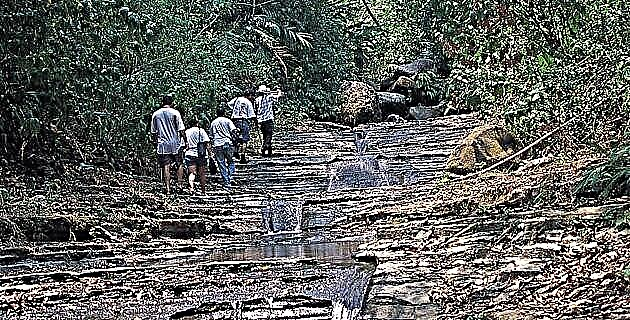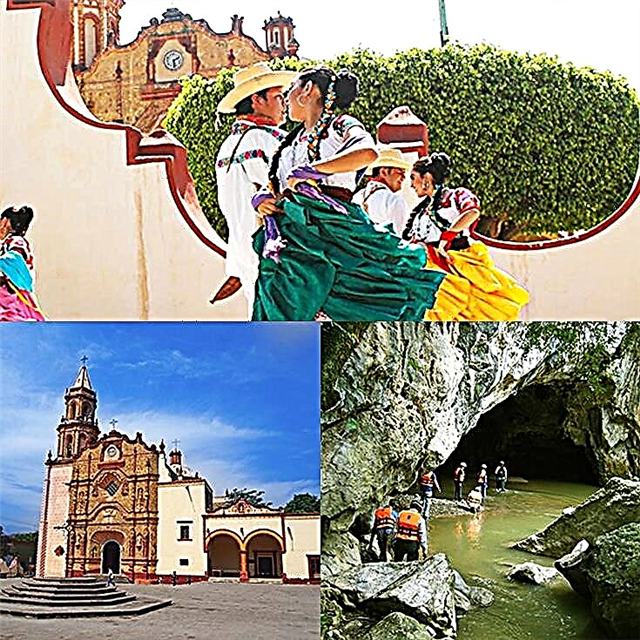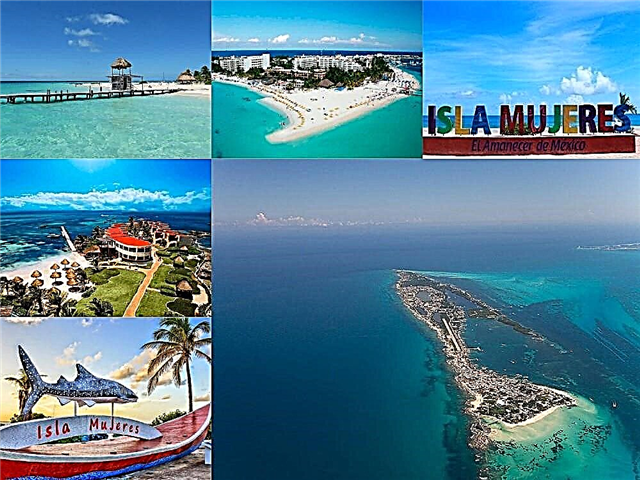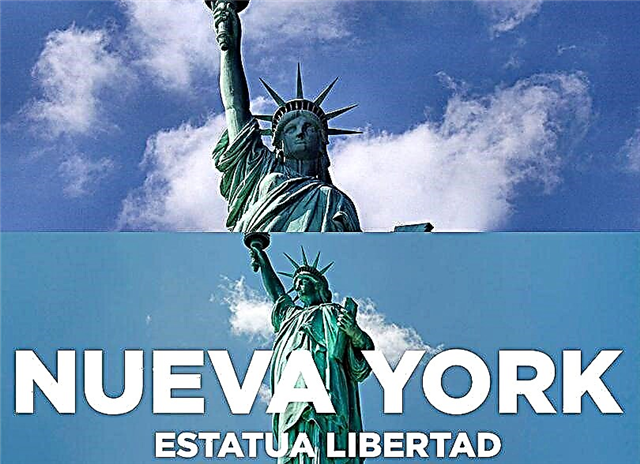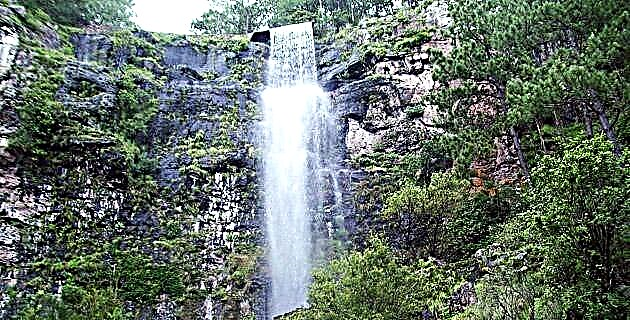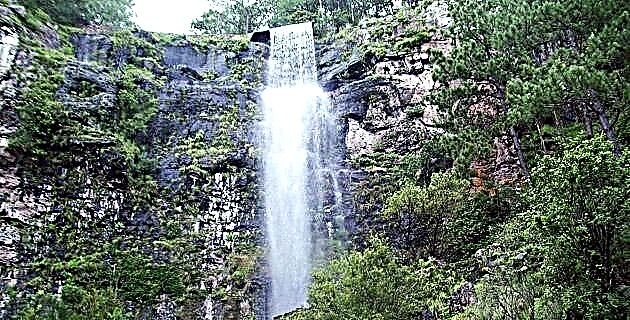
The large waterfall turned out to be 120 meters, an extraordinary beauty and the vision of the interior of the creek really impressive.
It seemed that we were on a step in the middle of the verticality of the ravine, and downwards we saw the fall fall to a huge pool.
Among the pilots of the Sierra Madre it was rumored about the existence of a great waterfall in Durango. My friend Walther Bishop soon located one of them, Javier Betancourt, who not only gave us the location, but offered to let us fly over it. We had the opportunity in the month of July 2000. In less than an hour we were on the Quebrada de Piaxtla. The view of the canyon was spectacular. From a large plateau covered by forest a deep, vertical crevasse emerged. The river plunged into the stone gorge. The vertical dimension was impressive. At one point Javier pointed down a point to us on the river and we saw two large waterfalls a few hundred meters apart. We circled the waterfalls several times and returned.
The next day we left by land towards the ravine. We wanted to locate the waterfalls. In Miravalles, where the creek begins, we established our base. It is an almost ghost town next to the Piaxtla River that became extinct along with the sawmill. The area is surrounded by a dense coniferous forest that configures wonderful places where the river runs.
Don Esteban Quintero was the only guide we got, since no one wants to enter the ravine due to its impassability. The next day we took the gap towards Potrero de Vacas. We marched through ditches, bridges, rocks and fallen trees for two hours and stopped at an abandoned ranch on the edge of the ravine. Potrero de Vacas is located halfway down the ravine and can only be reached on foot. The ravine is impressive, probably in this part it will be more than a thousand meters deep, practically vertical. We looked out over some viewpoints and went down a bit, until we saw the canyoned river.
"There are the waterfalls," Don Esteban told us, pointing to a point at the bottom. However, the waterfalls were not visible, so it was necessary to continue. Walther and Don Esteban continued, I stayed at the viewpoints to take a series of photos of the landscape. At three and a half hours they returned. Although they could not reach the waterfalls, they did manage to see them from a distance. The one they observed best was the waterfall above, Walther followed him calculating a 100 m drop. The second, the largest, they only saw the upper part. We would return with people and equipment to download and measure them.
ONE YEAR LATER
On March 18, 2001, we returned. Don Esteban would be our guide again, he got a couple of donkeys to carry all the equipment. They would also participate in the expedition; Manuel Casanova and Javier Vargas, from the UNAM Mountaineering Group; Denisse Carpinteiro, Walther Bishop Jr., José Luis González, Miguel Ángel Flores, José Carrillo, Dan Koeppel, Steve Casimiro (both from National Geographic) and of course, Walther and myself.
The road was so bad that from Miravalles we made three hours to the abandoned ranch, on the edge of the Quebrada de Piaxtla. We prepare equipment and food, and load the donkeys. At 4:30 p.m. we started the descent, always having wonderful views of the ravine. At 6 pm. we reached the bottom, to the very shore of the Piaxtla River, where we established our camp in the middle of a sandy area. The site was excellent for camping. About 500 m downstream was the first waterfall. In this section of the journey, the river chained itself, forming two small waterfalls, the largest of about ten meters, in addition to other wells and jars well carved in the river stone.
On March 19 we got up early and prepared the cables for the assault. As the donkeys could not go through the route to the waterfalls, we all carried the cables and walked along a path, clearing the route with a machete. Through here you could walk just to the top of the first jump, then the river was completely pointed and only rappel could continue. When I arrived, Javier had already located a point to descend and explore a little of the panorama below the waterfall. From there we saw the small waterfall well and its fall would not be more than 60 m, much less than we had calculated. As the cable led directly to a huge pool, we looked for another descent point. We located a simpler one where we did not touch the water. The descent was about 70 m of fall. From below the small waterfall looked wonderful as well as its large pool. We walked 150 m after the jump until we reached the big waterfall. On this journey, they advanced by jumping between huge rocky blocks, pools and vegetation, all surrounded by the walls of the ravine that seemed to rise towards infinity.
When we got to the big waterfall we were presented with a unique scene. Although the jump was not as big as we thought, since it turned out to be only 120 m, it seemed that we were on a step in the middle of the verticality of the ravine, and down we saw the jump fall to a large pool and from there it continued the river following its course through other waterfalls, waterfalls and pools. In front of us we had the stone walls of the ravine and a series of cracks gave the impression of following a sequence of gorges.
We were in a box of honor, in addition, we were the first human beings to step on this site. We all hugged and congratulated, we remember so many people who supported us in this dream, that perhaps many thought it crazy, but still they gave us their trust. We placed two 50 m cables where we went down and made a photographic sequence of this waterfall. We were ecstatic for a long time, enjoying the scenery. We did not go down to the bottom but enough to measure the waterfall. We had secured two new unknown waterfalls for our collection of explored wonders.
The next day, after collecting the ropes from both waterfalls, we set up camp and began the slow ascent to Potrero de Vacas. It was two hours of climbing, always with beautiful views of the ravine behind us.
Source: Unknown Mexico # 302 / April 2002


